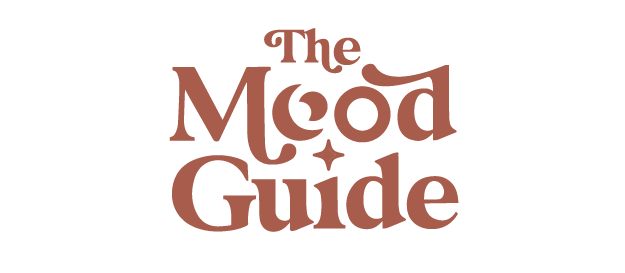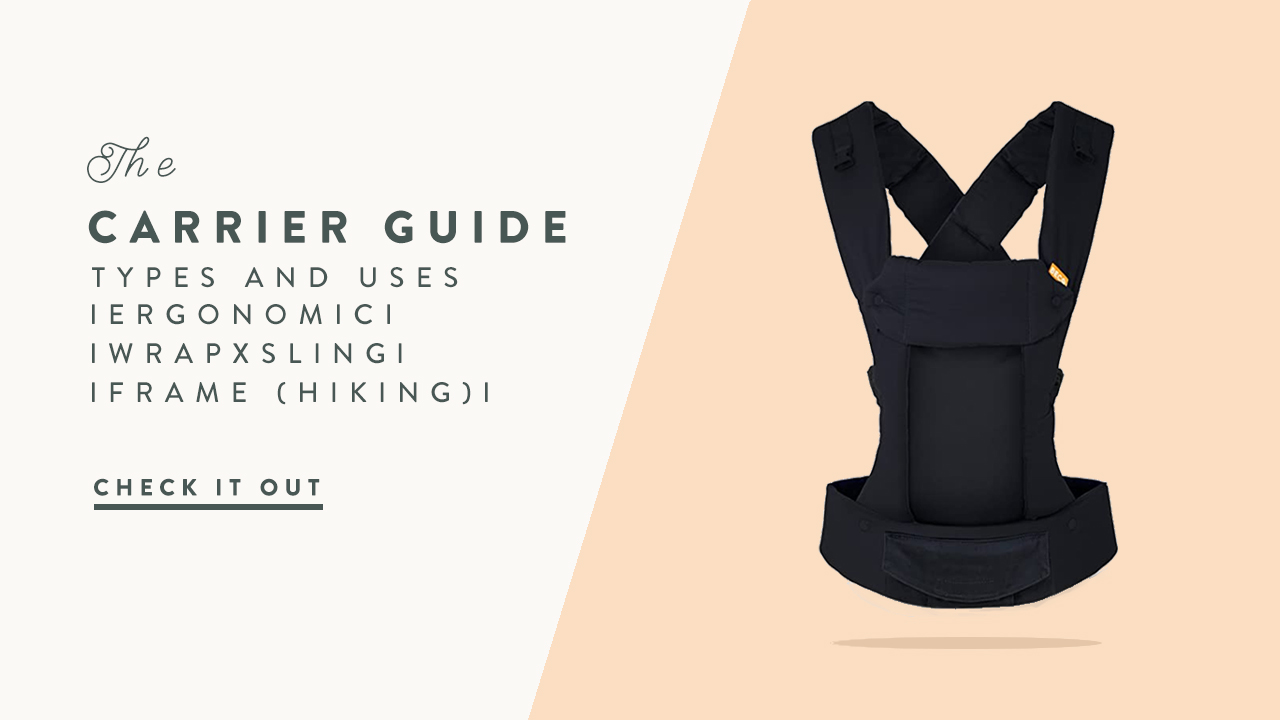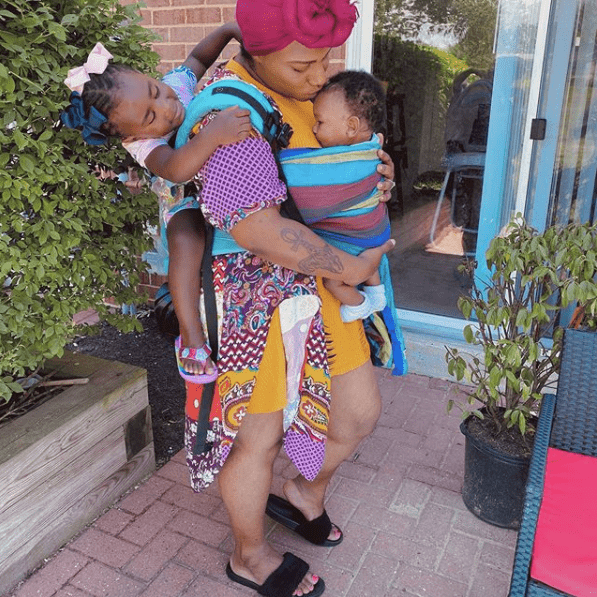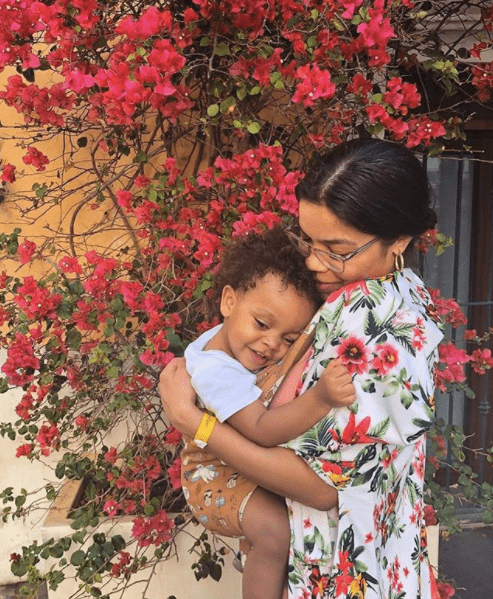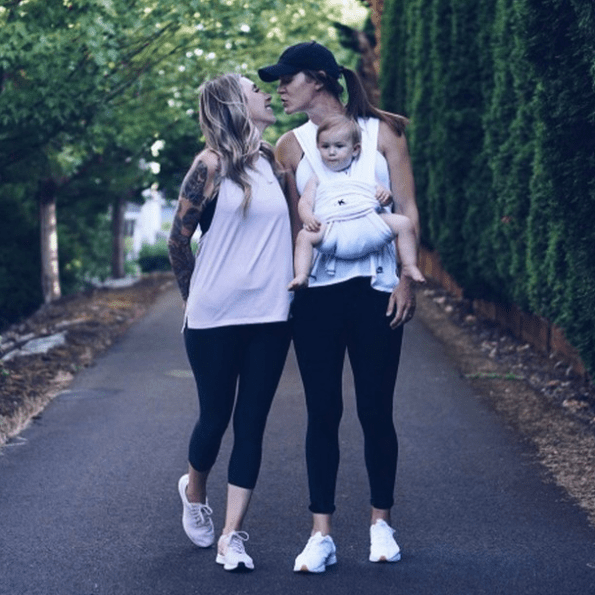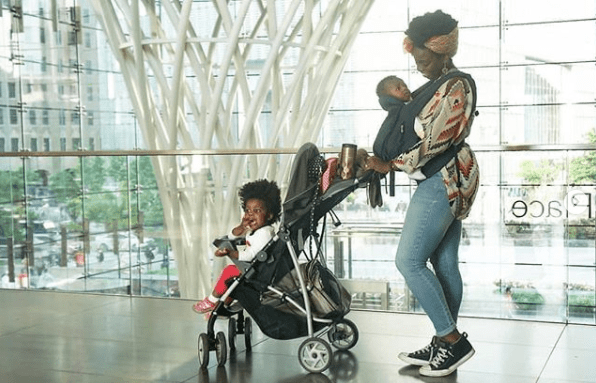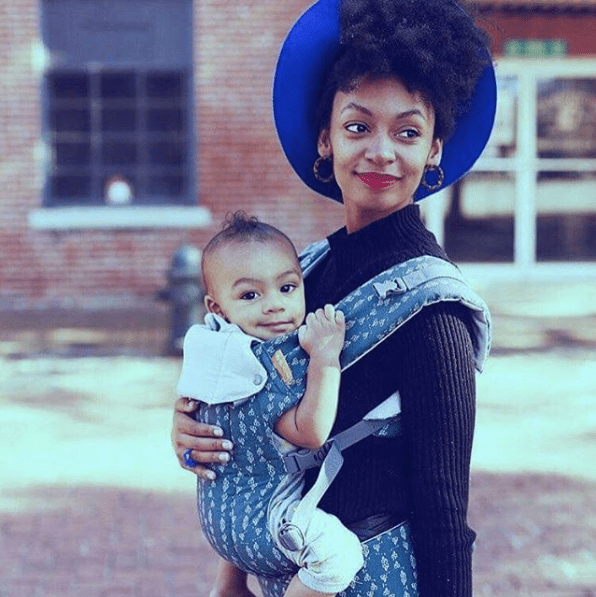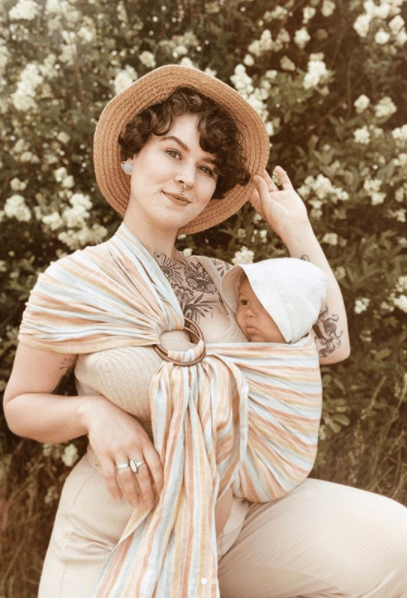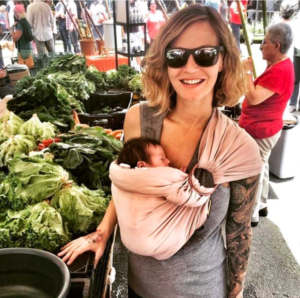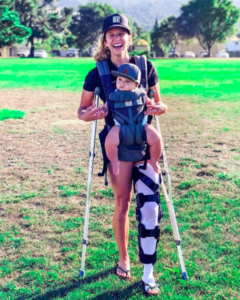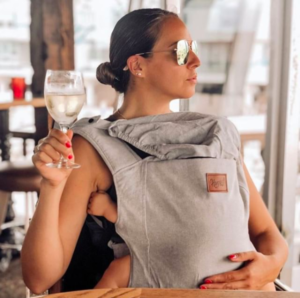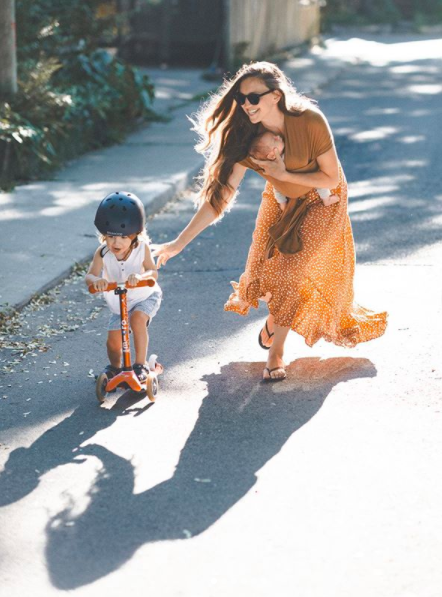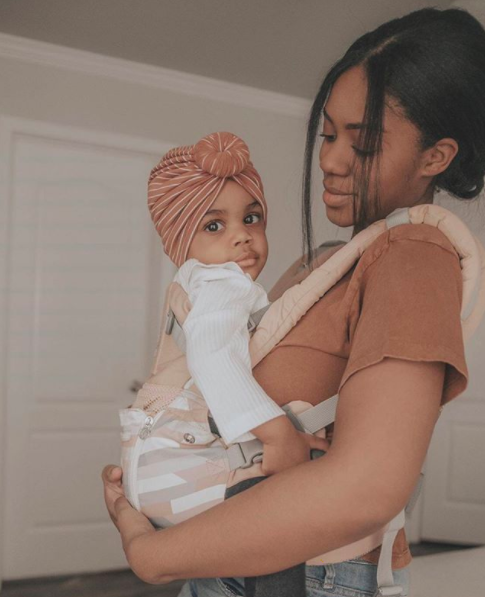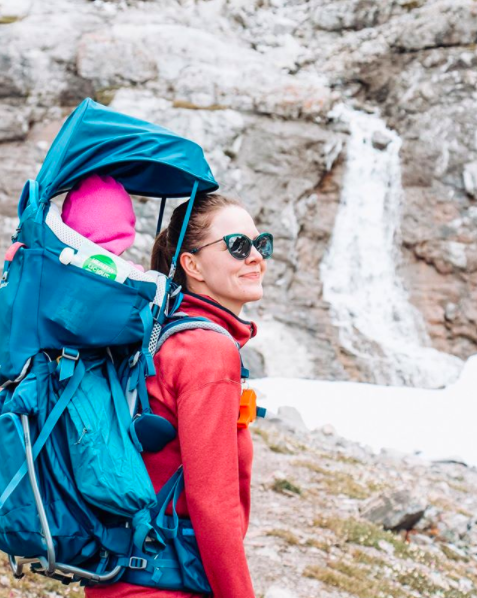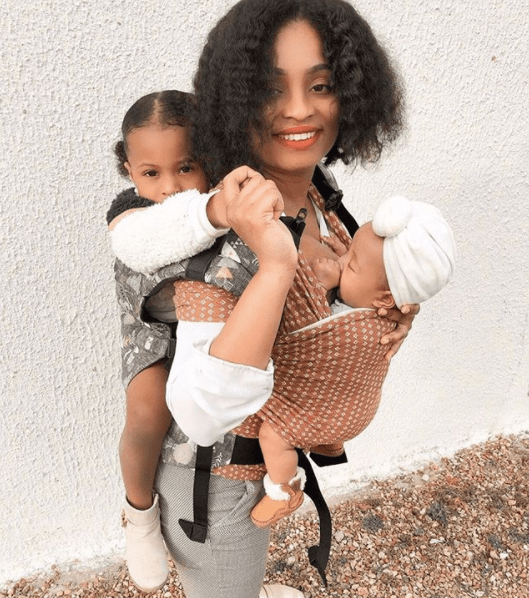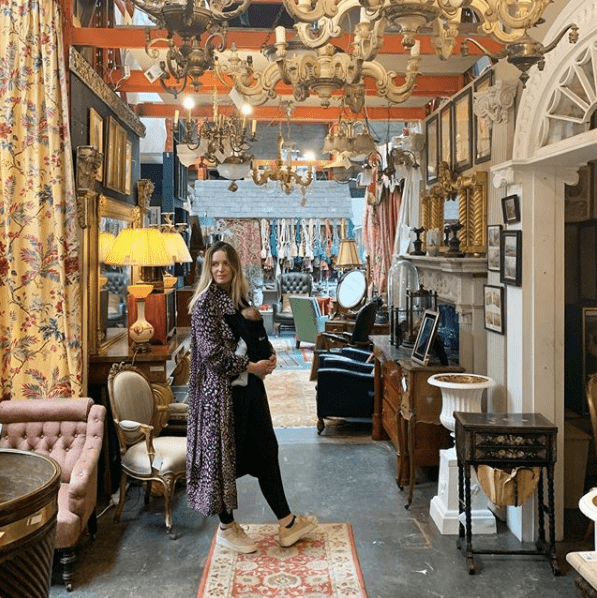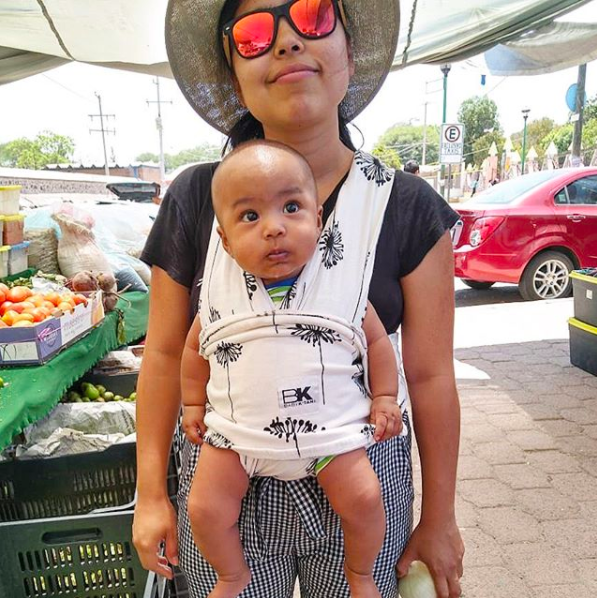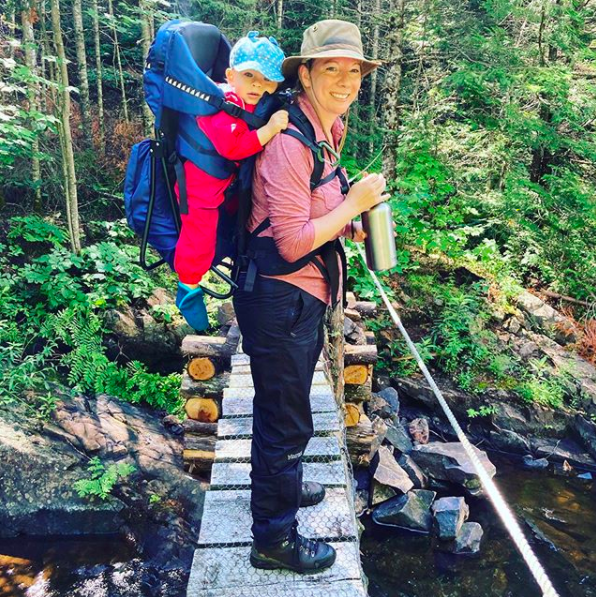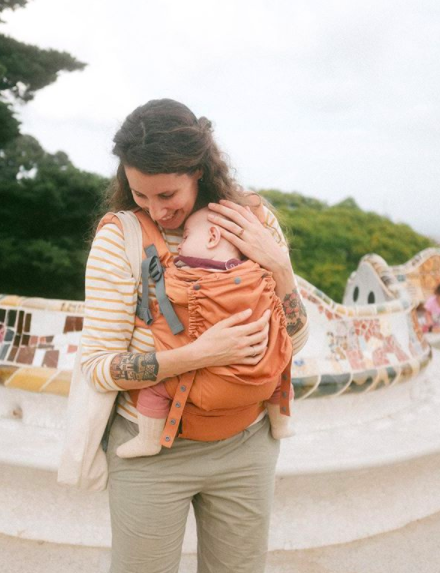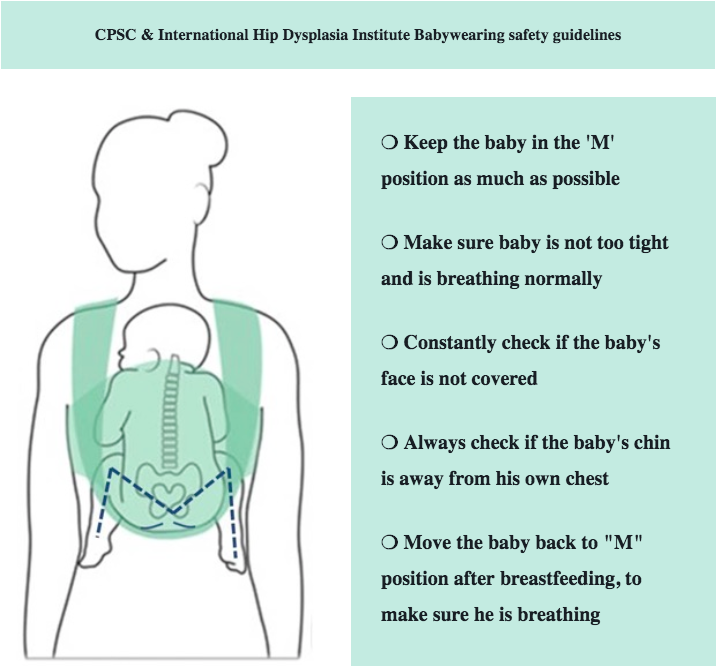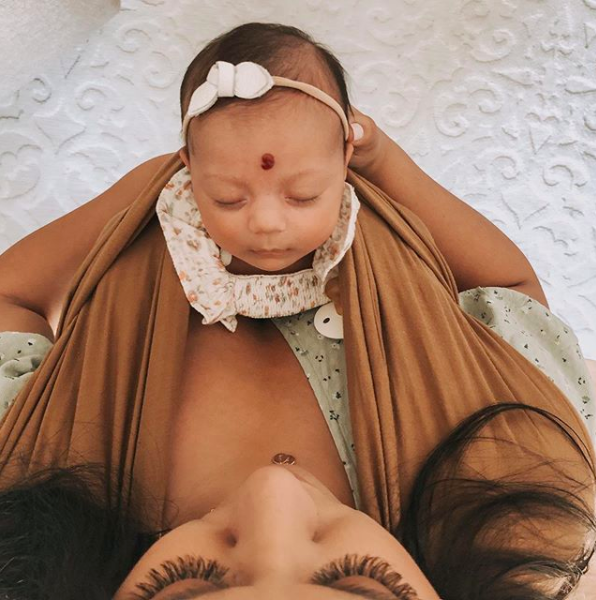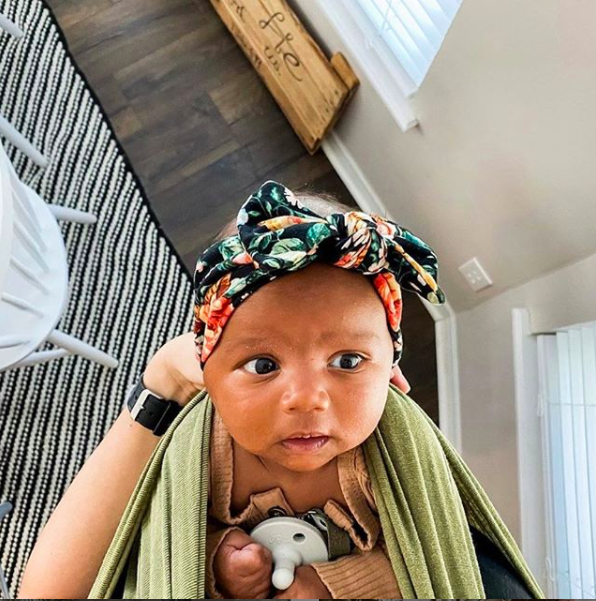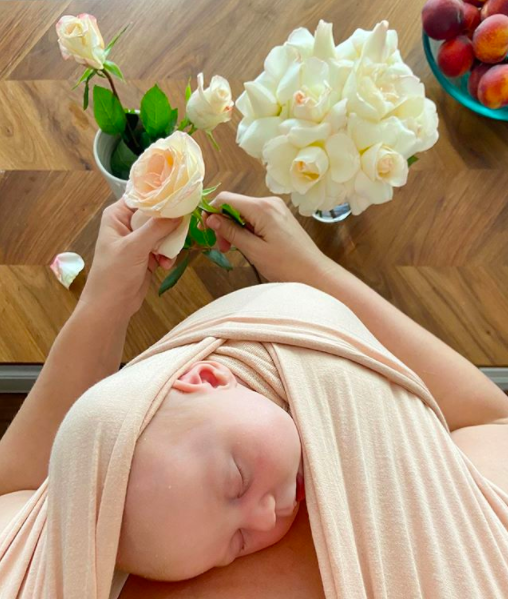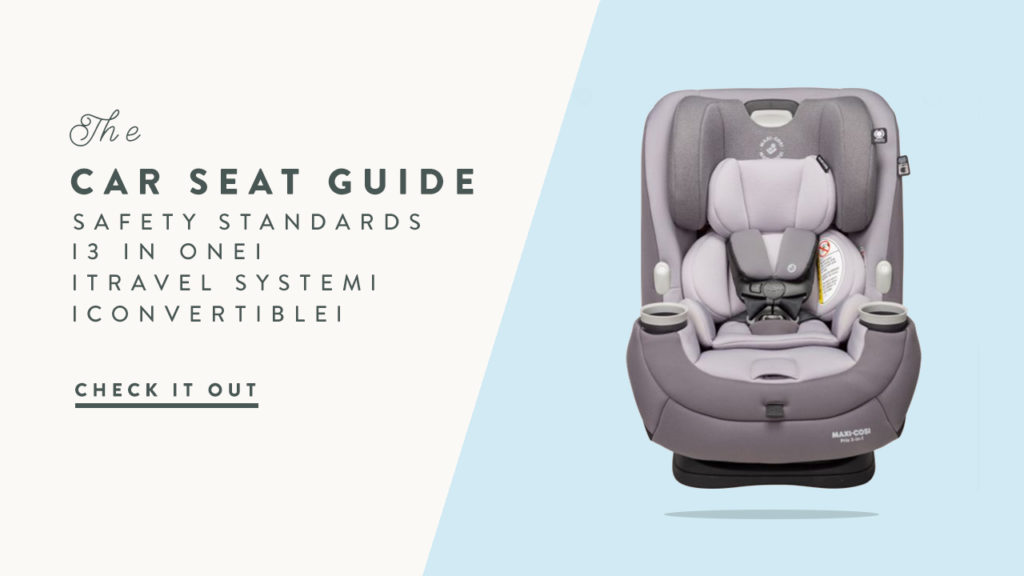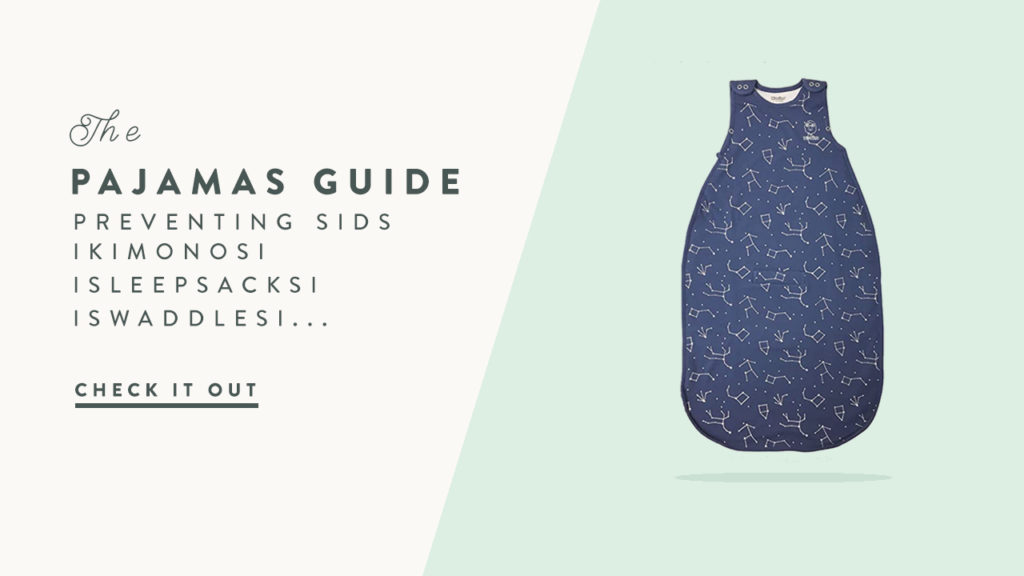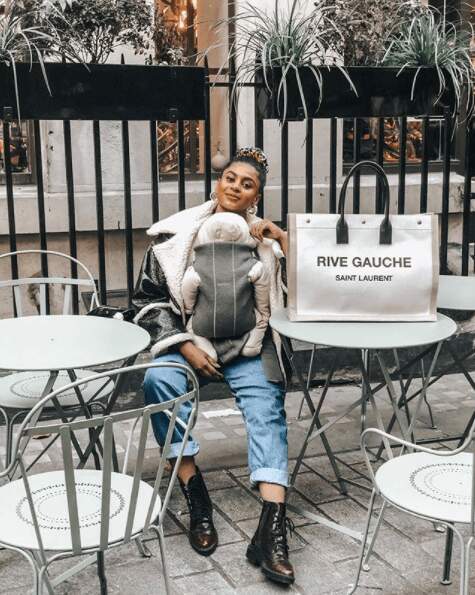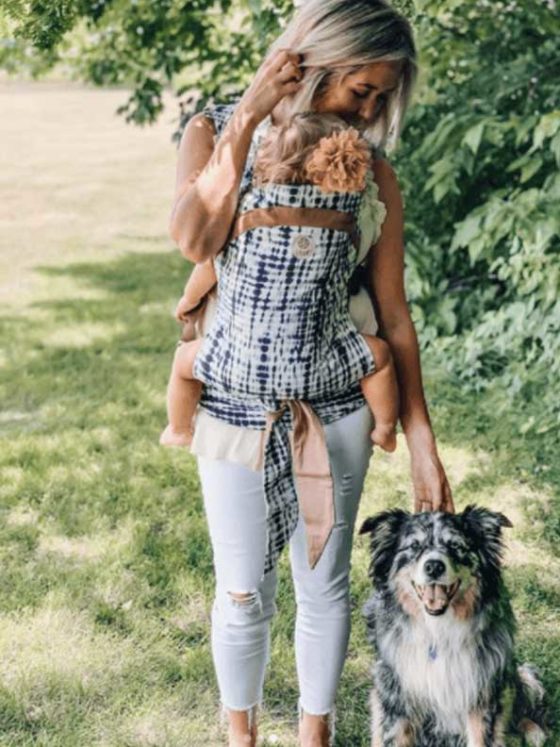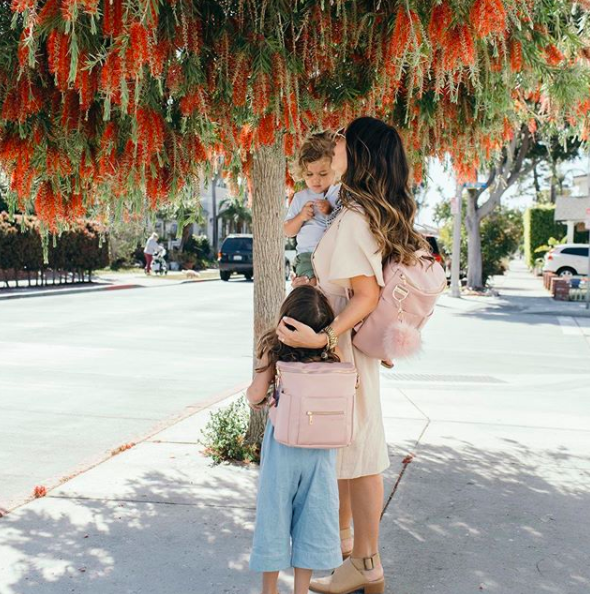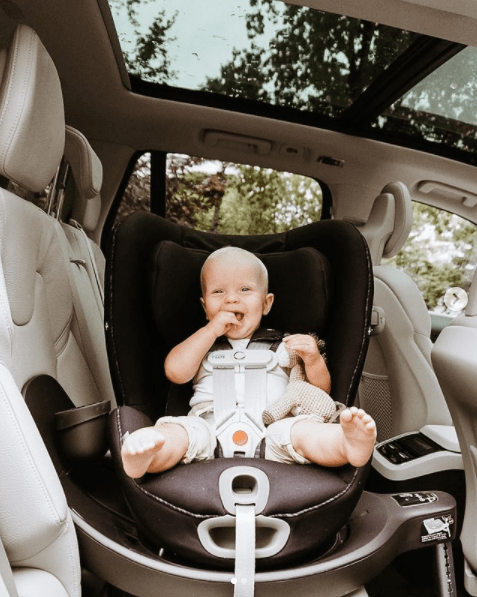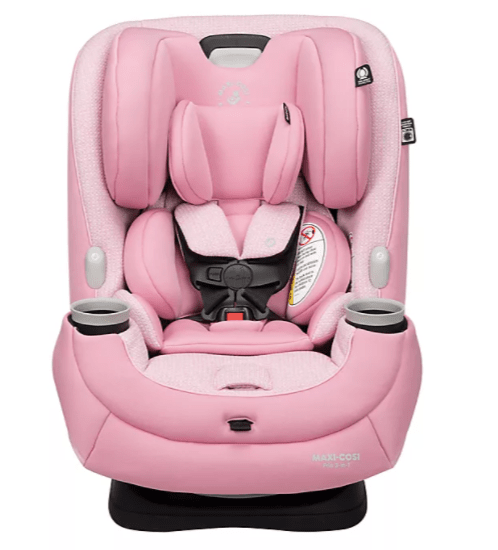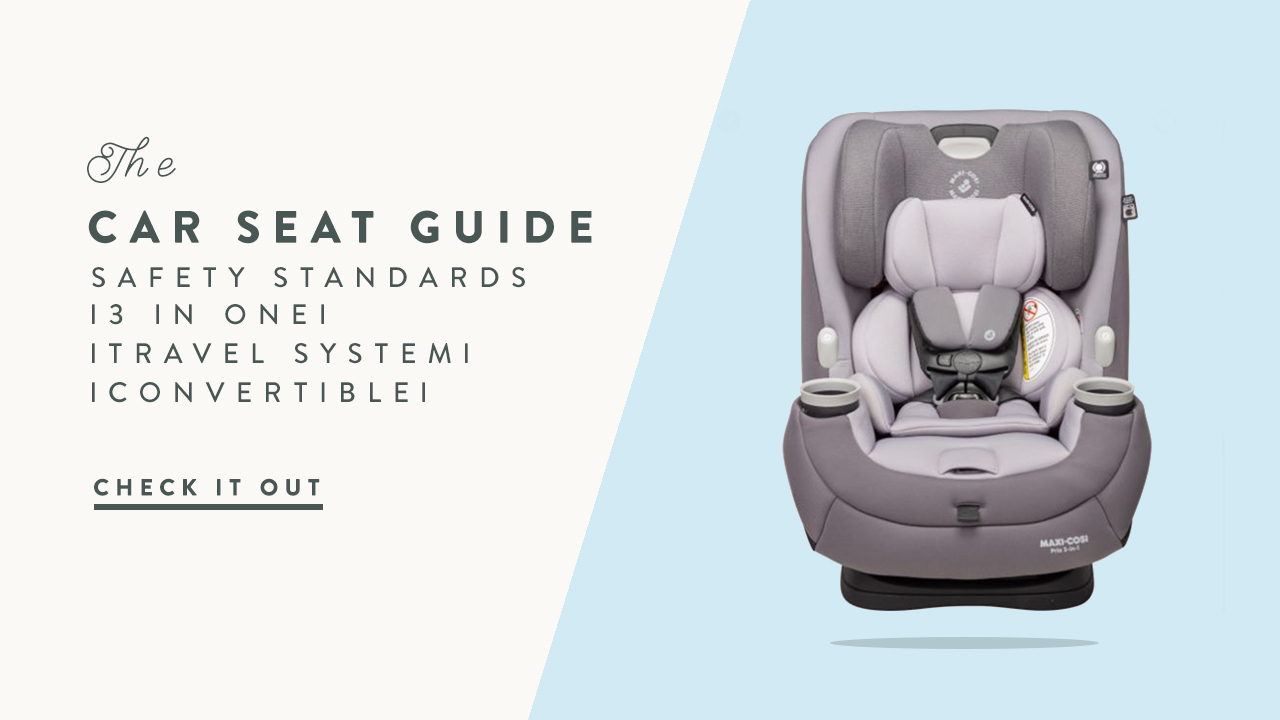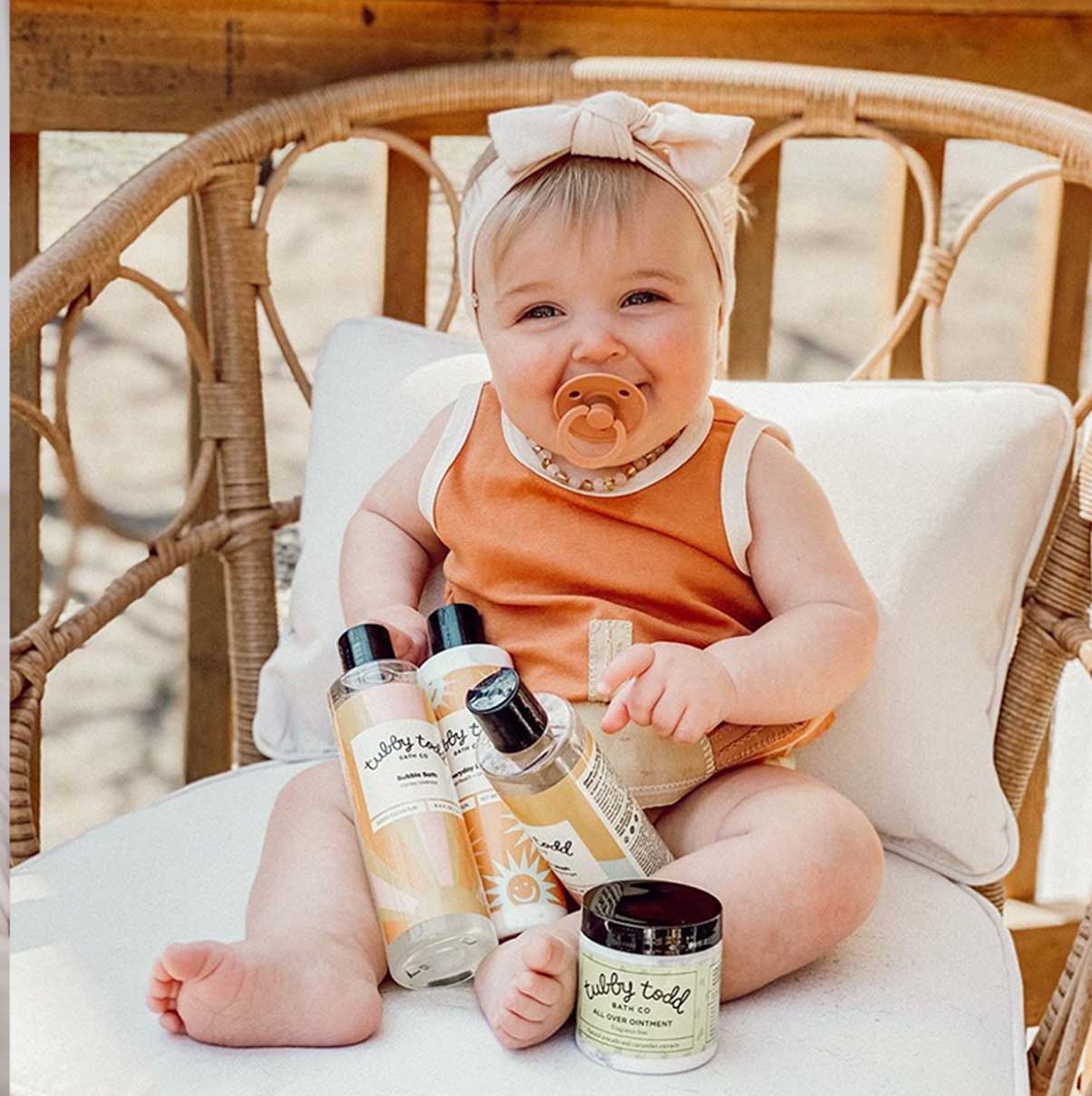On a very personal note, I see babywearing as power & independence wrapped in love! The fact that you can lovingly carry your child and be a functional grown-up at the same time is a major win-win.
So, if you want to wear your baby with confidence, you must know what baby carrier is best for you!
I am not talking about the best brand. There is a lot of reliable, Hip Health Institute certified and ASTM compliant brands out there: ERGObaby, LÍLLÉbaby, Solly, Moby, Boba, and the list goes on. That doesn’t even make the first cut!
⚠️ This post does not have personal opinions on safety matters.
All safety information is from the American Academy of Pediatrics, the Consumer Product Safety Commission, and the International Hip Dysplasia Institute websites. They are accordingly referred to throughout the text.
There are indeed a few things to figure out about safety and which type of carrier is best for what. And I promise: we made it easy to read with a lot of inspiring pictures of real moms wearing their babies!
Here is what we will cover, so you can go straight to the point:
♥︎ Are baby carriers a must-have?
♥︎ Some benefits of babywearing
♥︎ What are the types of carriers in the market?
♥︎ What baby carrier is best for you?
Are baby carriers a must-have?
No, they are not. Not in the sense of being mandatory by law, like a car seat. So, if you don’t want to buy it or you can’t buy one, you don’t have to.
However, they can be very (very) helpful, depending on your lifestyle and your baby personality.
In hance sight, baby carriers are considered a must-have item for most parents registry. Therefore, once you start looking into it, you will stumble upon an overwhelming number of brands and different types of carriers in the market.
Some benefits of baby wearing
According to the American Academy of Pediatrics, babywearing brings a lot of benefits for the baby. It can be a good response to crying and contribute to parent attachment, which can help with baby development.
Baby wearing allows you to cuddle with your baby and to keep your hands free at the same time. As I mentioned before, it is power & independence wrapped with love!
Besides, it can be a convenient money saver! If you are on a very strict budget, you can ditch the expensive stroller and even the bouncer. But again, it really depends on your preferences.
And if it looks too much info just have in mind: like everything baby-related, there is a learning curve until you nail it! If you really wanna wear your baby, you are already doing the right thing by educating yourself!
What are the types of baby carriers?
There are basically 4 types of carriers in the market. We are going to run you through the basic features of each model, so you can understand the differences and best uses!
Ring sling
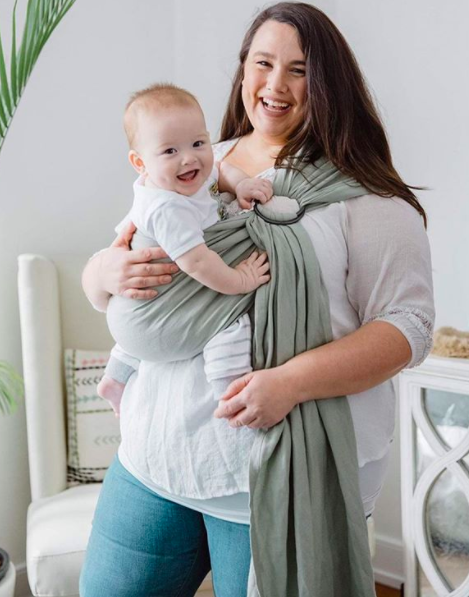
∙ It is a long soft fabric with a ring
∙ More used for babies from newborn to 6 months, but it also depends on the manufactures’ weight limit and your back comfort
∙ Adult wear: Over one shoulder & across torso support
∙ Discreet breastfeeding friendly
∙ International Hip Dysplasia Institute recommended for babies under 6 months
♥︎ Some parents find it uncomfortable if you have preexisting back issues, but it’s easy to assemble and usually less bulky than the wrap.
Wrap
∙ It is a super long soft fabric
∙ More used for babies from newborn to 18 months, but it also depends on the manufactures’ weight limit and your back comfort
∙Adult wear: Over booth shoulders & around mid-section support
∙ Discreet breastfeeding friendly
∙ International Hip Dysplasia Institute recommended for babies under 6 months
♥︎ Some parents consider it too complicated to assemble and it can get hot, but it is more comfortable on their back and shoulders than a ring sling
Soft-structured
∙ Ergonomic backpack-like with defined baby seat
∙ More used for babies with neck & back control, but some manufacturers have models for newborns
∙ Adult wear: Adjustable shoulder straps & around the waist support
∙ International Hip Dysplasia Institute recommended for babies after 6 months old (except for approved models)
♥︎ Most parents prefer soft-structured carriers for older babies, with neck control
Frame Carrier
∙ Framed backpack with baby seat
∙ Must be used only with babies with neck & back control, accordingly with the manufacturer’s weight limit
∙ Adult wear: Adjustable shoulder straps & around the waist support
∙ Back carrying position
♥︎ Parents love it for hiking or longer outdoor activities
When it comes to carrying babies, it’s all about ergonomy. Meaning that their neck, back, and hip must be in the right positions. That’s why each model is more suited to better accommodate the baby as they grow and have more muscular control.
As of how to wear them, the best source of knowledge is always the manufacturer. You can reach out to Youtubers and bloggers you trust for additional info, but the manufacturer is the best source of knowledge for safe baby wearing.
What baby carrier is best for you?
There are some well established famous brands in the market, compliant with the CPSC guidelines, certified by the International Hip Dysplasia Institute, loved by baby specialists and parents. Since the price range varies from US$30 to over US$200, there is an option for every budget.
All of this variety can be confusing. Nevertheless, once you feel confident about the practical aspects, then it is time to research brands, colors, etc.
In conclusion, here are the 5 points you may consider to find the best baby carrier for you:
1. You must feel confident about your choice. Go for trustworthy certified brands. Browse their Instagram, see if they have instructional videos and a helpline. Try different models if you can. Read as many reviews as you feel like reading. Learn from experienced friends. And just do it if you really feel like doing it. ?
2. Age-appropriate, safe & comfortable for the baby: In general, here is what most parents prefer and the International Hip Dysplasia Institute recommends: slings and wraps for smaller / younger babies and soft structured carriers for older / heavier babies. However, you can find a variety of slings and wraps appropriate for older babies and SSC safe for smaller infants. Regardless of which type you choose, always respect the manufacturer’s limits. After all, carriers are an extension of yourself, holding your most precious cargo!
3. Comfortable for your back: Be realistic here. If your back hurts from carrying the groceries, you may need more back support then a ring sling may offer, so maybe a wrap is an option for your infant, and a soft structured with extra back support is best for older / heavier baby.
4. Convenient for your lifestyle: Again, be honest with yourself. Are you willing to learn how to wrap it around your baby? If you are not, maybe a soft structured carrier that is also safe for newborns should be your pick. How often will you go out with the baby? Will you wash it and leave it to dry accordingly? Do you live in a hot and humid place? When you look at all the pictures of these kick-ass real moms in this post, who resonates with you?
5. Always, I said A-L-W-A-Y-S, respect manufacturers weight limit: every fabric has a stretchy limit. Once this limit is exceeded it represents a hazard to the baby and carrier. So, again, always respect the manufacturer weight limit.
And yes, you are thinking right: most parents who opt for babywearing have multiple carriers for each moment of baby’s life. So it is really on you! 😉
Is baby wearing safe for newborns?
It is. As long as you follow the positioning safety recommendations.
There are 2 main hazards for wearing newborns in the wrong position: suffocation and hip dysplasia. However, according to the CPSC and the International Hip Dysplasia Institute, both risks may be prevented by properly wearing the baby in the “M” position, no matter which type of carrier you choose.
Since babies can’t fully hold their necks and back for the first 5 or 6 months, positioning them in the “C” shape may cause suffocation hazards on young infants. Also because newborns are still developing their hip ligaments, their hips should be supported most of the time.
Because of that, the carrier must be ergonomic and appropriate for their weight and age, so they can be placed in a safe position.
In 2017 the CPSC approved a federal safety standard for slings and carriers. Therefore, carriers sold in the USA should comply with their standards. Nonetheless, if you can, always buy from trustworthy brands and retailers to avoid counterfeits!
And remember to always check the manufacturers’ instructions before using your carrier.
Wow! That’s a lot of information!
What about you? Feel like wearing your baby?
